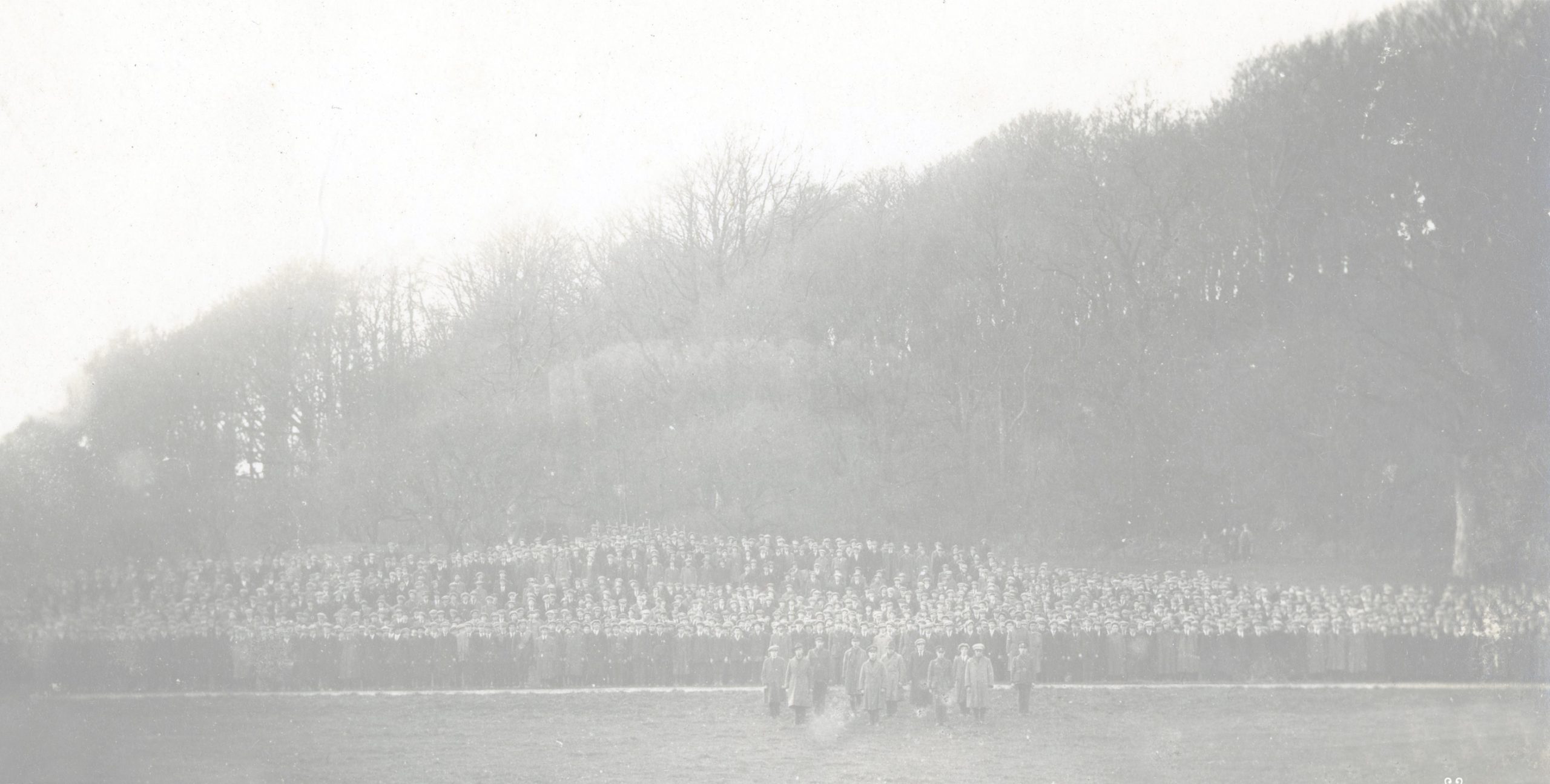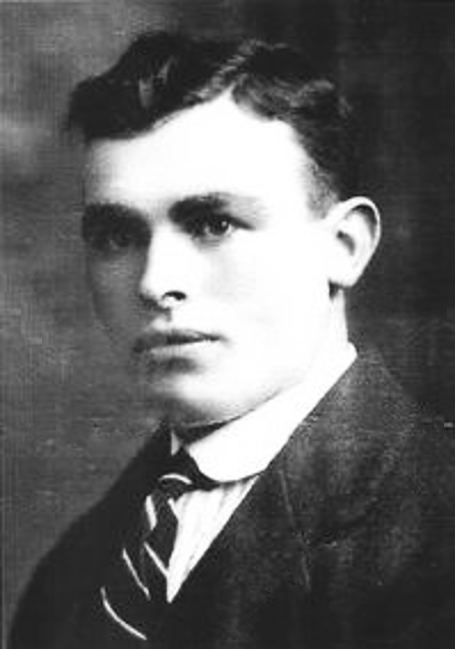
This is a shortened version of a talk given by Michael Moran to the Achill Historical Society on his uncle Lieutenant Michael Moran. He drew on documents from the Bureau of Military History and the British National Achieves to piece together the story of his uncle’s involvement in the War of Independence.
Michael Moran was born in 1896 in Dooagh, the third of Patrick and Bridget Moran’s nine surviving children.
The first record I have of Michael was from Emily Weddall who came to Achill and founded Scoil Acla in 1910. She initiated Michael into the Volunteers in Dooagh. Here is an extract from a letter she wrote to the Minister for Defence Frank Aiken in 1937.
“I have known the Moran family for many years, especially Michael… He was sworn into the volunteers in Dooagh Village Hall, founded by me and I was more or less responsible for his military career which I followed with great interest and in connection with which he lost his life.” (BMH/WS File 7657 p62)
She wrote a second letter to Frank Aiken:
“My home was in Achill and perhaps no one has a better knowledge of happenings there between 1910 and 1926. Michael Moran and most of the young people of Dooagh attended classes for Irish dancing, language, singing and plays etc. And later for drill in a hall which I gave them for that purpose. Of all the young people, Michael Moran was perhaps the most in earnest. When trouble began, unfortunately very few of the Dooagh boys distinguished themselves. Michael Moran and a few other boys of the island however put up a very good show when away in England. They joined up with the Liverpool City Company IRA and took part in dangerous activities over there, including the burnings of warehouses etc. When things became too hot for them in England, Michael and others had to clear out of Liverpool and come home” (BMH/WS File 7657 p 110)
The first available record for Michael’s I.R.A. membership is dated August 1919. He is listed in an active service unit in Liverpool in a document held by the Bureau of Military History. The same list includes the names of two other men from Achill.
The main function of the Liverpool IRA was to supply any weapons it could find and ship them by boat to Dublin. Michael was working in the mines in St Helen’s Lancashire where according to witness statements he sourced explosives for operations in Liverpool . In a witness statement, Eamonn O’Connor, Superintendent of the Coastal Patrol in Dun Laoghaire, wrote in 1924:
“I worked with Michael Moran of Dooagh, Achill in the volunteer movement in Liverpool in 1920-21. During that time he was a most energetic worker in the cause of Ireland, in getting explosives from the mining districts of Lancashire, and in the organisation of volunteers.
He took part in the burnings of Liverpool and was always a very reliable man in any class of work in the Irish Ireland movement.” (BMH/WS 7657 p 215)
In terms of operations, the most significant one during this period was known as the “Liverpool spectacular”, where the IRA firebombed up to 19 warehouses (depending on what report you read) and timber yards, on the 27th of November 1920. According to several witness statements Michael took part in this.
The following is from a short article in the Liverpool Daily Post Saturday 27 November 1920.
Warehouses and Timber Yard Fires
“In Effingham Street the Warehouses were so badly damaged that the walls were bulging and the people in the adjoining streets had to evacuate their homes. Fire Brigades from as far away as Manchester, St Helen’s, and Prescott were called in to deal with the fires. There were fifteen fires stretching in a line four miles in extent.”
This operation caused massive damage. But the real impact was in the timing. It took place just a week after Michael Collin’s squad assassinated 12 intelligence officers and two RIC Auxiliaries in Dublin on the 21st of November. And the Liverpool burnings were followed the very next day by the Kilmichael ambush where the Cork No. 3 Brigade IRA under Tom Barry killed a total of 17 Auxiliaries. According to historian Pádraig Óg O Ruairc in his book Truce (page 24-25):
“Bloody Sunday, Kilmichael and the campaign of sabotage in England generated significant press coverage in the British media. The unprecedented scale of the attacks coupled with the state funerals at Westminster Abbey of six British officers killed on Bloody Sunday ensured the IRA’s military campaign made front page newspaper headlines all over Britain.
According to an undated letter from Sean Lynchehaun, Michael’s superior officer, he instructed Michael to return to Achill. He wrote:
“He took a very active part in the Liverpool company, narrowly escaping and avoiding arrest on the night of the fires…. It was on my advice, and instructions, that he came from Liverpool after the fires, carrying with him some guns and ammunition for the local company. He immediately on his arrival home set up an active service unit and attacked a certain individual, with his unit, who was giving information to the enemy, with the result that himself and my brother Thomas R.I.P were recognised and arrested…”
(BMH/WS File 7657 p67)
The unit set up by Michael, referred to in Sean Lynchehaun’s letter, was formed in the winter of 1920-21. According to a witness statement by Brian Corrigan, himself a member, the unit comprised six members with Michael Moran in charge. (BMH/WS File 10714 p53). The unit was involved in two engagements with Crown forces . (BMH/WS File 10714 p11)
Michael and Thomas Lynchehaun, who was also arrested in connection with the same incident, were tried by Field General Courtmartial and sentenced to twelve years penal servitude. Their trial was tracked by British Headquarters. I have documents stamped secret, from British Headquarters Irish Command Parkgate Street, and from the Chief Secretary’s Office in Dublin Castle: they were inquiring how the trial was proceeding.
They were first held in Claremorris. I was curious as to why he was held there and found information about Claremorris in the Bureau of Military History archives (Ref BMH/WS 0400 page 87).
“Claremorris is the principal railway centre in the West of Ireland, with the Limerick-Sligo and Dublin-Westport lines passing through the town and an additional branch line from Claremorris to Ballinrobe. Claremorris, because of its important railway facilities, was made the Headquarters of the Western Command of the British Army in Ireland from 1916 up to the evacuation of the British Army in 1922. Incredible as it may seem, there were times during which there were 30,000 troops in Claremorris. Buildings in the town were taken over for military accommodation and a large camp was built outside the town.”
Michael started his prison term in Galway jail which stood on the site where the cathedral stands today. According to the O/C of the IRA in the prison, Thomas Kilroy, Michael was in poor health complaining of pains in his stomach. He wrote in his witness statement in 1937 that he was almost certain Michael took part in a hunger strike in the prison. In Emily Weddall’s letter to my grandmother she says : “I am so glad I went to see poor Michael in prison in Galway. We had a long, long talk and I told him all about everyone.” (BMH/WS File 7657 p 162)
Michael is mentioned in several documents in connection with the riot where prisoners set fire to the jail on November 23d 1921. It was just two days after this incident that he was transferred to Dartmoor.
I asked two historians who specialise in Modern Irish History about the riot and the burning of the gaol and neither of them knew anything about it. I tried to google it and it didn’t come up. I finally found this report after hours of trawling through copies of the Connacht Tribune in the National Library. I will quote briefly from the article.
Connacht Tribune 26th November 1921
DRAMATIC PROTEST;
POLITICAL PRISONERS SET FIRE TO GALWAY JAIL
FIERCE FIGHT IN NORTHERN WING
HOW A CAPTURED WARDER GAVE THE ALARM…
10 PRISONERS AND SOME POLICE INJURED
“Dramatic scenes beginning with two outbreaks of fire, the seizure of six warders and their imprisonment with forty political prisoners who barricaded themselves into the northern wing of Galway prison, and ending with a fierce but brief encounter between a party of police and the prisoners.”…
It is a long article giving a very detailed account of the incident which lasted about two hours before the authorities brought the riot under control. Immense damage was caused to the gaol.
Just two days after the fire Michael and Thomas were in Dartmoor prison. James Kilroy of Belmullet was a republican prisoner in Dartmoor around the same period, yet he only met Michael and Thomas on the way to Dublin after the republican prisoners were released in the General Amnesty of January 1922 following the signing of the Treaty on December 6 1921 because it seems Michael was in separate cells the whole time he was there.
James Kilroy says in his letter dated February 1936:
“During the time …Michael Moran (was) in Dartmoor I never got a glimpse of (him) until the day of our release…The first we knew of them was I think in November 1921 when we heard a batch of prisoners came from Galway gaol and two of them were from Achill and one of them was the nephew of the “famous Lynchehaun” and they were confined to separate cells. Those are cells that has a double wall and double doors and are supposed to be for prisoners that tried to escape or for prisoners that are undergoing punishment….I know all about those class of cells….The separate cells are a terrible place of punishment, as I spent one month in one of them, and I am sure if I spent one more I would not be alive today…as I was almost blind when I got out of there.” (BMH/WS File 646 p9)
Michael, Thomas and James Kilroy travelled as far as Manulla together. James Kilroy says “They told me they would hardly be removed from Galway but for they damaged the … Gaol and tried to set fire to it….(Michael) …complained of the terrible treatment they received while in Dartmoor.” (BMH/WS File 646 p11)
Piecing it all together, I can only presume Michael must have spent nearly two months in solitary confinement in separate cells because other prisoners never saw him during his time in Dartmoor. This is supported by other statements. Also, James Kilroy’s evidence that he was nearly blind by the time he got out of the separate cells, suggests to me that Michael may have been in darkness throughout his time there. And with the double walls and doors, I presume no sound could have penetrated into the cell.
In spite of everything he had been through, no sooner was he back in Achill but he was organising a training camp. Here is the testimony of Adjutant Brian Corrigan taken from the Bureau of Military History, in a witness statement dated 1937:
“Fortunately I had the honour of being in an engagement with Capt Michael Moran and therefore I know that he was a gallant soldier and an enthusiastic worker for the Irish Republic. After a very hard night’s work carrying out certain IRA operations he was arrested by RIC and Black and Tans and was sent to Galway Gaol. There he was sentenced to 12 years penal servitude and was sent from Galway to Dartmoor prison to serve those years there. When the general amnesty came early in 1922 he was released and on his return from Dartmoor prison to Achill he immediately took part in military organisational work and helped us to start a training camp at Corriemore Dooagh Achill. When everything in the camp was ready and training had commenced, Capt Moran fell dead. The verdict at the inquest was that Capt Moran died from cardiac failure due to brutal treatment which he received from British forces whilst a prisoner.” (BMH /WS File 7657 p68)
Adjutant Corrigan refers to Michael as a Captain. In a conversation I had with Michael’s brother John Moran of Dooagh, he told me Michael was promoted to Captain in the field but he died before it was officially confirmed.
Emily Weddall wrote “Before his arrest he was a fine strong-looking boy of 23; at 25 he returned home on January the 18th 1922 and died suddenly on the following Saturday… it is quite obvious that Michael Moran’s constitution had been enfeebled by ill-treatment and the rigours of prison life…On his return home, instead of resting for a little, he immediately resumed his military service, helping to establish an OTC in his village.” (BMH/WS File 7657 p 63)
In her letter to Frank Aiken she says: “Mrs. Moran had an open door and welcome for the IRA. In fact her house was their headquarters even when it was dangerous for her to befriend them.” (BMH/WS File 7657 p44)
The verdict of the jury at the coroner’s inquest, based on medical evidence, was he died from cardiac failure due to mistreatment in prison
There was an obituary and a report on Michael’s funeral in the Mayo News dated 11th February 1922. He was buried with full military honours. Present were officers of the West Mayo Brigade….Michael Kilroy, Divisional Commandant General of the 4th Western Division… and officers of the West Mayo Brigade Staff who were: Commandant Connolly, Commandant Heavey, Vice Commandant William Malone, Captain Flaherty and Captain Keane and firing party.
Local officers of the 5th Battalion in attendance included Vice-Commandant An Paorach.
Finally I’ll read from Emily Weddall’s letter of commiseration to my grandmother on Michael’s death.
She wrote :
“I am so terribly sorry to hear about him. It was a terrible thing and an awful loss to you just when you had got him back. He must have had great hardship in prison poor fellow….Mr. Henry tells me you had another terrible misfortune before Michael’s death and that you lost Pat as well”.
“I am fearfully sorry for you and for all the family to have had such terrible misfortune. Mr. Henry also told me about poor John Kane, another lovely, good boy. I am as sorry about the two of them as if they were my own.”
(BMH/WS File 7657 p162)
Michael is buried in Slievemore cemetery. A native of Currane, John Gallagher, born 1883-1965 who emigrated to Cleveland and was active in the IRB in America, provided funds for his gravestone.
Emily, who had such an influence on the Moran family, lies in the Republican plot in Glasnevin cemetery, where the present members of Scoil Acla have erected a beautiful headstone.
On the Left coming into Newport from the Westport direction, is a memorial, to those who lost their lives in connection to the Tan conflict in West Mayo; Michael’s name is on it.
Click to View
Click to Read
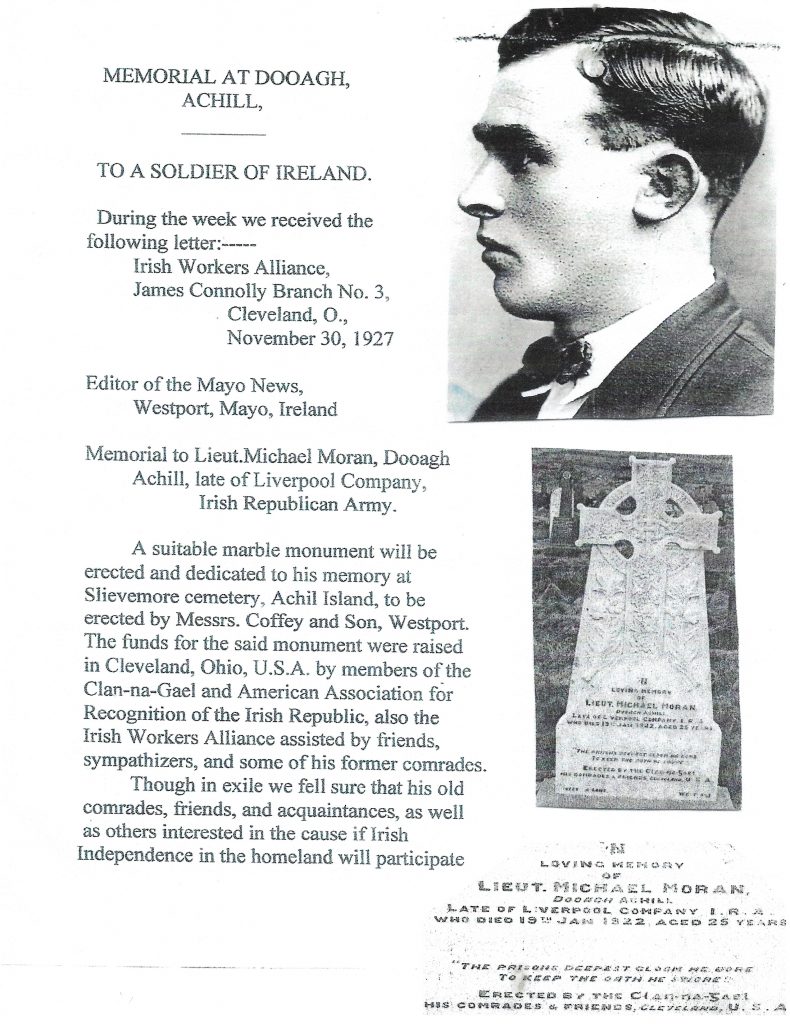

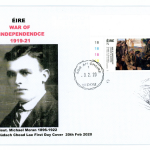
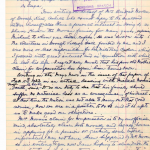
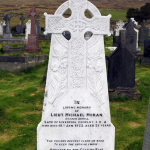
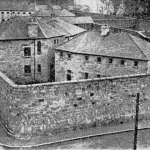
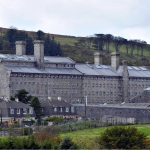
 www.westportheritage.com
www.westportheritage.com